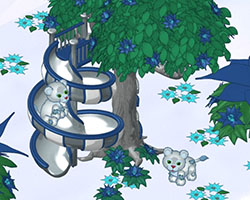
By Cowabelle Cowoline
Ever since the ‘Kinz Crew found that cool book near the Magical Forest, it has got us thinking about how old objects can tell us all sort of information about the way things were in the past. My mom told me that’s called Archaeology. Scientists known as Archaeologists learn about the history of different societies by examining old objects that they’ve discovered. Archaeologists can tell all sorts of things from old stone tools and ancient artifacts, such as the types of food that were eaten, farming methods that were used and even what types of clothes were worn.
When archaeologists want to study an area that they think might hold clues about past civilizations, they do an excavation. Excavation involves digging up a site to search for objects or structures. The archaeologists have to be careful though, because old materials can be very delicate and are easily damaged.
Once objects have been recovered from an archaeological dig, they are cleaned and then compared to existing artifacts. Archaeologists also have ways of analyzing the materials that the objects are composed of, which can tell them exactly how old something is.
Maybe the book we found will give us the keys to learn about Ancient ‘Kinz societies! Maybe it will point us in the right direction to uncover parts of Kinzville that we didn’t even realize existed. Wouldn’t that be the coolest thing ever?







Have a shippy shippy shippy day! Right?
sounds cool…. but im pretty sure thats why we can’t get on today:(
so cool!
Actually an excavation involves gridding out the area in either 2X2 or 4X4 grids in an area no more few hundred meters by that many meters. Then when the bucket rat – those that are the ones lucky enough to dig because archaeologist supervise each and every dig – begin to dig it’s between 2mm and 4 cm at a time. When an artifact is found it is then photographed in its place, sketched on a grid-lined paper showing the exact location of said artifact, then it is removed and placed in a bag – aka bag and tag the item. After that it is put in a box that is air and water tight and shipped to a climate control facility and there by either removed from it’s matrix – all the dirt that surrounded the object – or cleaned if it was easy to remove from its original place that it was found in. This process takes months to do – few weeks to dig and the rest is spent in labs analyzing the object, carbon dating it, cleaning it, replicating it for exhibit use and so forth.
you are awesome
I already knew this but interesting. =)
Yeah, I already learned this stuff in second grade (in an extra class the advanced readers got to go to) but it is interesting. If I hadn’t already known that, I would’ve been like “whoa” and tell my sister)
:mrgreen: SEAWEED :mrgreen:
Do you think all the the pieces of map every one had received, has something to do with the ancient webkinz society, as she was saying?
Cool! I think it would be awesome to discover something really rare at a dig site.
~*Emeraldleaf* :mrgreen: ~
It would! :D
~(*)sparklegirlLT(*)
archaeology sounds interesting!!
*Luv from LillyLuvie*
Nice facts!
~(*)sparklegirlLT(*)
Thanks for all the interesting info, Cowabelle! :D *Luv from LillyLuvie*